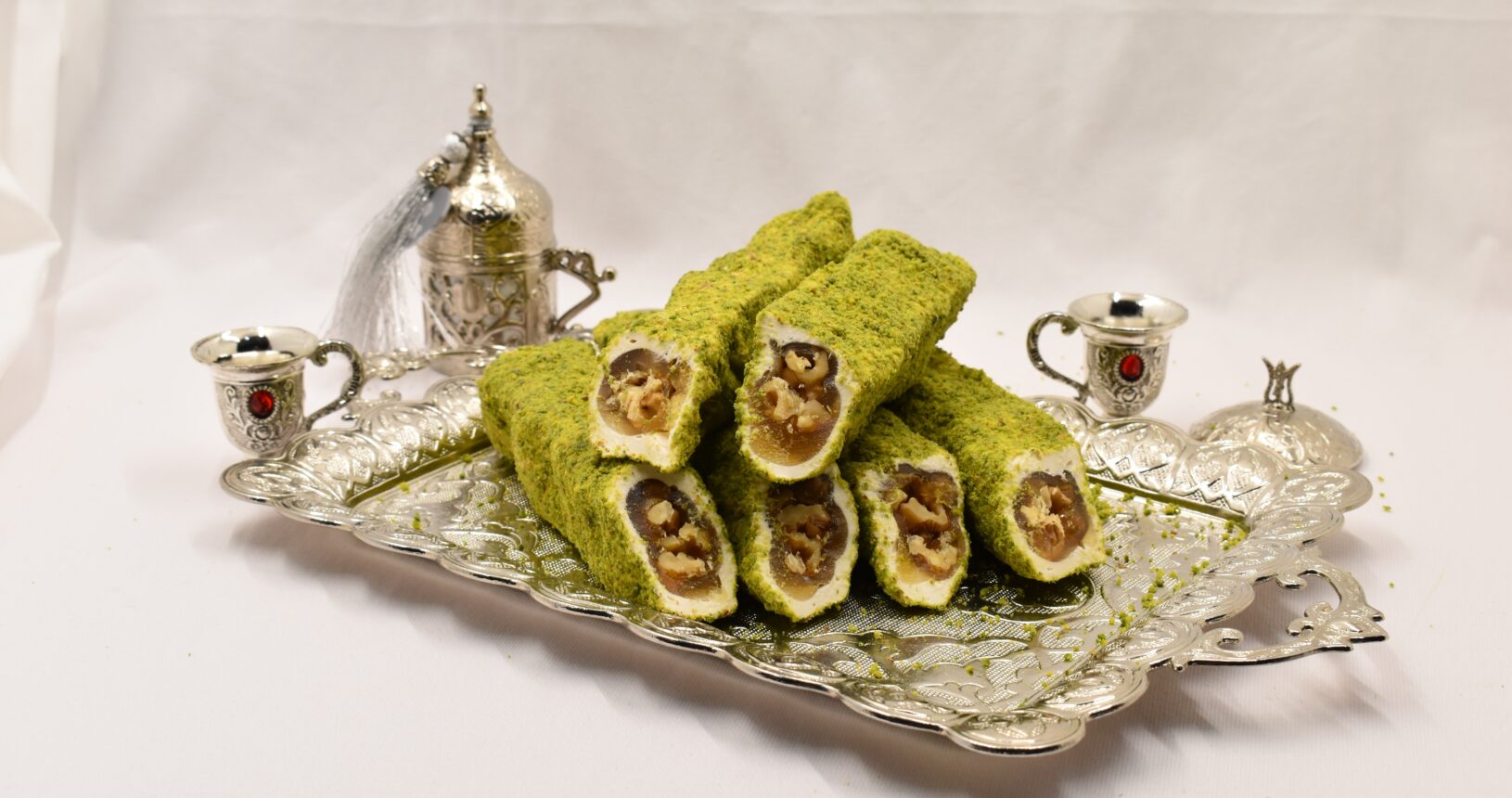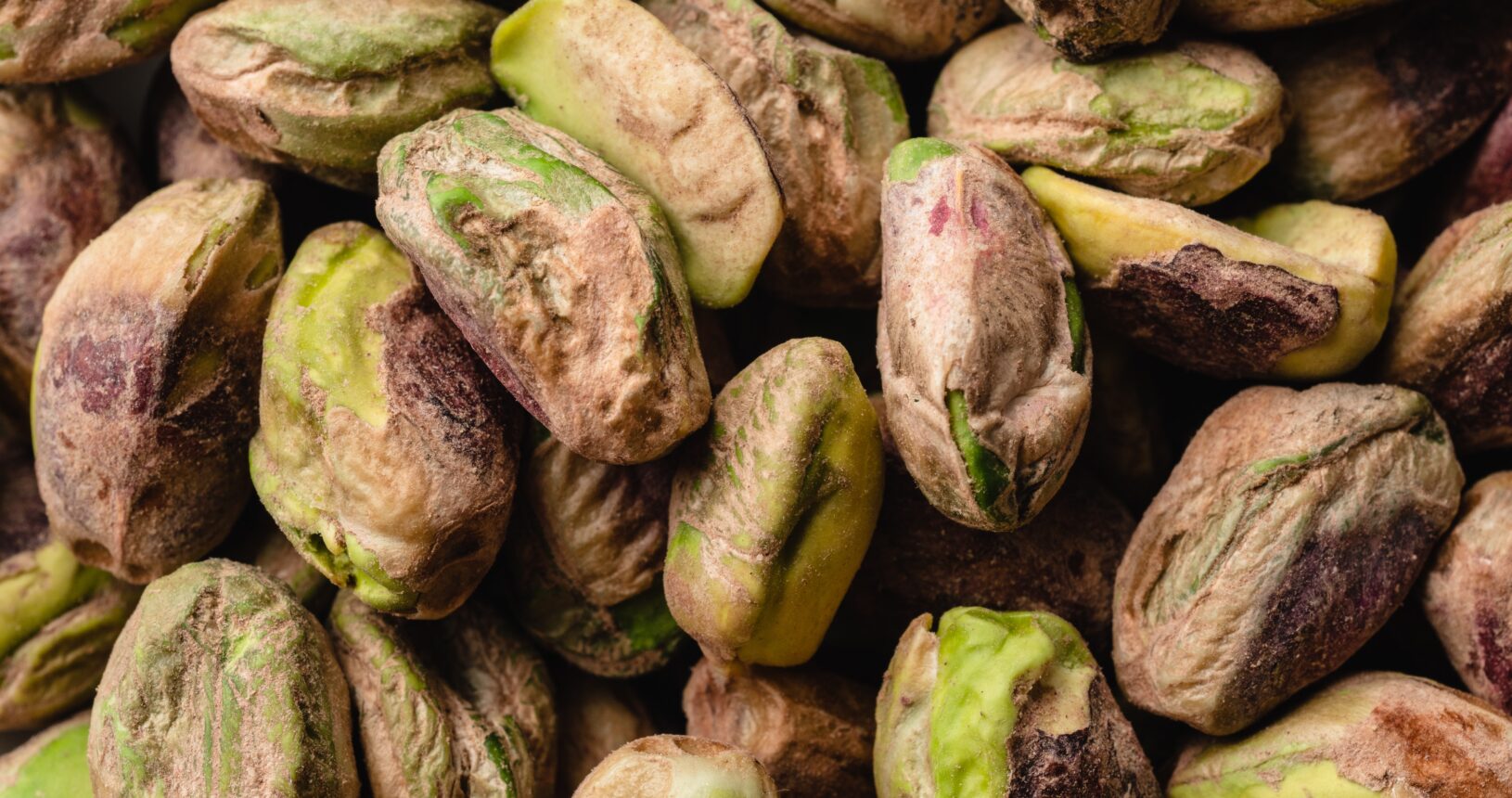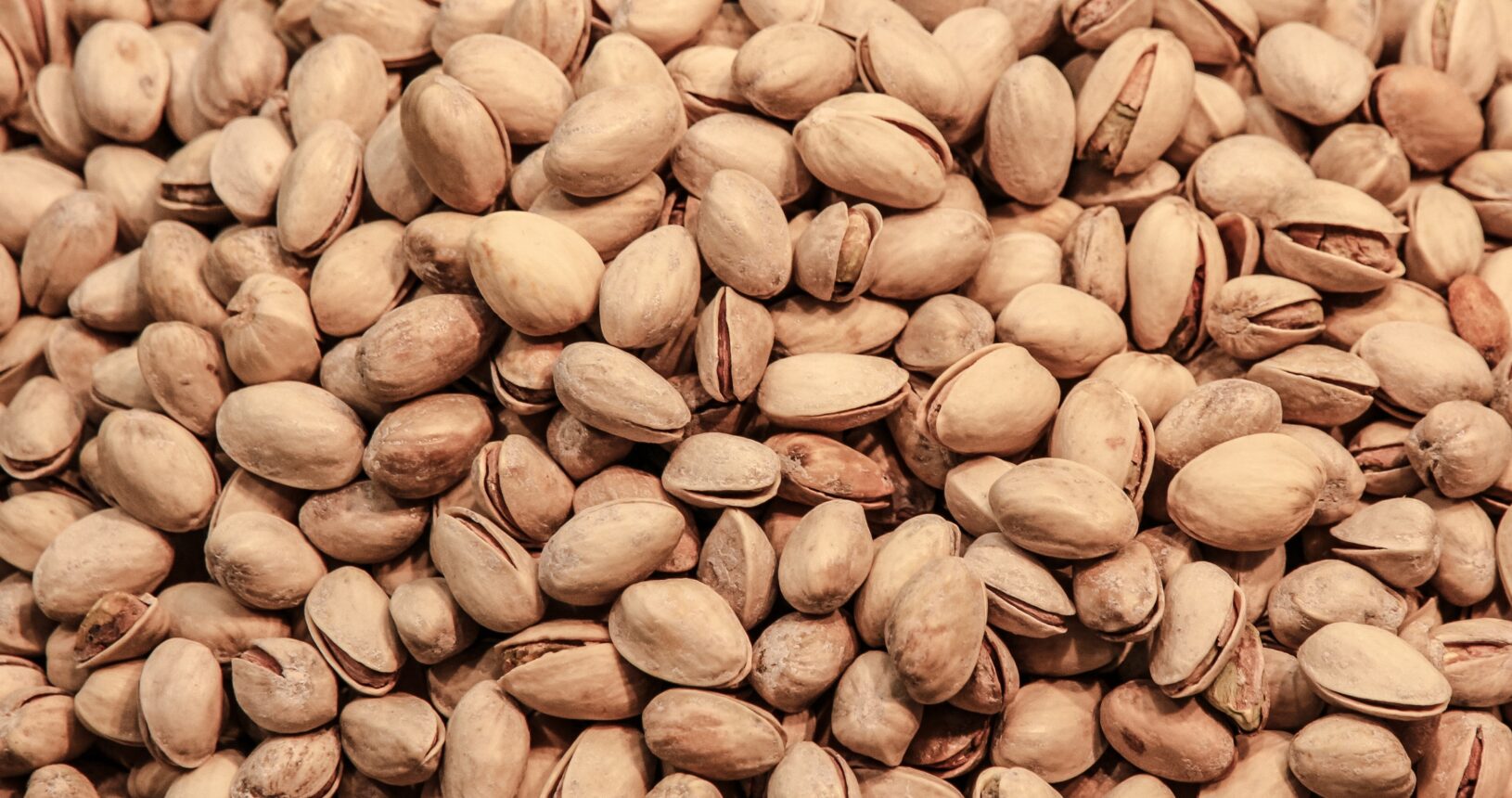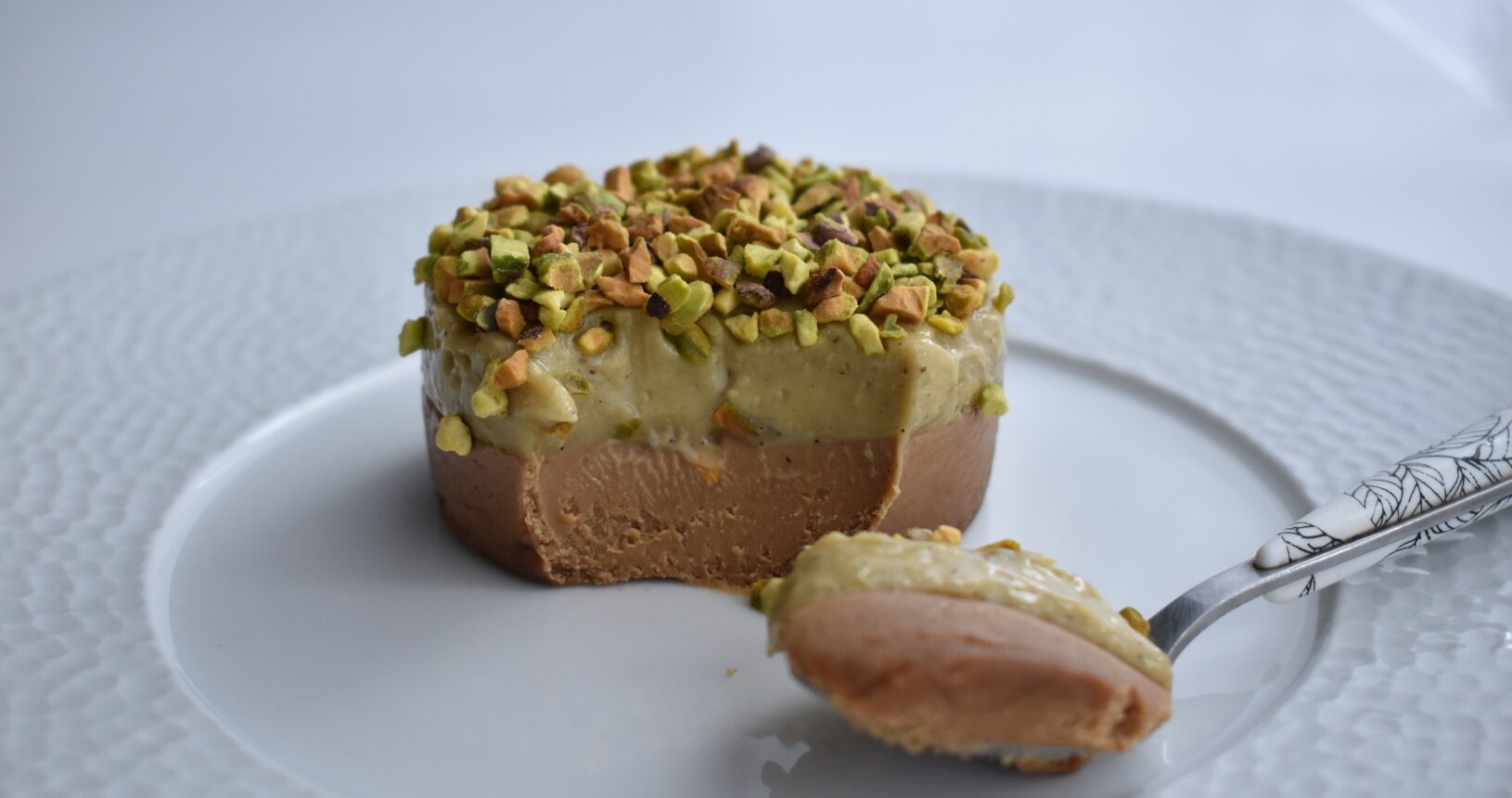Pistachio
It is a fruit with a thin skin that has a meaty and delicious core . We use hybrid pistachios in Farmidarena that has an American descent.
These seedlings are up to twice as productive as regular trees.
Also, these trees bear fruit from the first year of planting.
We use another type of pistachio in Farmidarena collection. The name of these seedlings is Ahmad Aghaei .It is a medium-growing sort and its seedlings yield early
These trees have better yields than normal ones.
About 3 tons of crop per hectare in the first year of fruit yield.
which increases with time and the growth of trees.
Suitable weather for pistachios:
The first step for building pistachio orchards is to know the climatic conditions of the region
and any activity should be done with the knowledge of the climatic conditions of the regions, otherwise the investment will be associated with high risk.
The pistachio tree and sapling, which has a high adaptation to drought, is sensitive to temperature and geographical conditions and is resistant to heat and cold.
High areas are not suitable places for planting pistachios because they often have low temperatures.
It should be noted that humid areas are not suitable for pistachio planting and growing.
and pistachios have problems in moderate weather and conditions.
The relative humidity in the summer season has reached 70
which is a high percentage and is not suitable for pistachios.
At the time of flowering and pollination of the product, increasing the relative humidity makes it have the maximum yield.
if it is less than 35, the pollination ability reduced and as a result, less fruit produced.
When the fruit ripens, if the humidity is high, it causes losses, including the spread of fungal diseases,
such as increasing the contamination of the product with aflatoxin.

Pistachio is very sensitive to late spring cold
Also, the heat of early spring causes the destruction of flowers and fruits at the beginning of the season. In addition, during fruit ripening and fruit growth, excessive heat increases the percentage of fruit porosity.
High and low temperature at the end of the growing season is one of the causes of abortion and the loss of the pistachio crop, which prevents the growth of the fruit and as a result, the pistachio crop aborted. Pollination is very important in pistachio tree planting and cultivation.
Considering that the flowers of pistachio trees are without petals and are not attractive to insects such as bees.
pollination done using the wind.
If the pistachio tree is not pollinated, the flowers will drop and then the fruits will drop. Also, the factors that cause the surface of the stigma to dry are strong winds and storms, while rain washes the surface of the stigma and loses its adhesion. These two factors reduce the pollination rate of pistachio trees.
Therefore, in pistachio farming areas, we pay attention to the blowing of hot and dry stormy winds with dust.
Major damage caused by late cold and early spring heat in some areas to the pistachio crop requires that we carry out preliminary study and detailed investigation to choose the appropriate pistachio variety compatible with the regions.
Water and soil conditions:
Soil as the substrate for the growth and development of trees and water as the flow of all nutrients (except for carbon) and the most important composite material of plant tissue are the most basic factors for the establishment and growth of trees, considering the diversity of water and soil, accurate knowledge From the water and soil condition, it leads to a targeted decision in choosing a place to build a pistachio garden.
Pistachio trees produce good crops in rich, loamy sandy soils with great depth and lower water and soil. Loamy soil is a combination of EC sand-sand and clay and is suitable for plant growth in terms of nutritional value. This soil has good composition and ventilation.
The construction of pistachio orchards in water and quality soil is more cost-effective, economical and the return of capital is faster. The tolerance of pistachio in the conditions of relative salinity of water and soil is not the reason for planting it in poor and salty soils, so that with the impoverishment of the soil and the increase of salinity, the yield per unit area decreases and the orchards gradually become uneconomical
High salinity of water and soil
In addition to the high salinity of water and soil, the existence of a hard layer, high salinity, sand under the clay layer, i.e. the presence of a complete layer, and the alkalinity of the soil on the surface of the false aquifers, or in other words, the high water table, are limiting factors for pistachio cultivation.
Before building a garden, it is necessary to check it with water and soil experts and if the limiting factors can be removed and the conditions can be corrected, then proceed to repair and then build the garden, otherwise It is better to ignore.
Knowledge of soil limiting factors and their removal from existing farm conditions are very important technical points.
How to plant pistachio seedlings:
After the proper location for planting seedlings, the first step is to prepare the land. The entire surface of the land is deeply plowe with a tractor, and if the soil has a hard layer or heavy texture up to a depth of 2 meters, it should broke and permeable with a sosoloz (ripper) and smoothed and leveled after plowing (the reason for this is that the pistachio seedling is a type of root that grows vertically and has the ability to penetrate the soil to a depth of two meters.
If, based on the opinion of water and soil experts, bubbler irrigation is desired, leveling with a slope of 1-2% and in drip irrigation, relative leveling is sufficient.
The most suitable distance
The most suitable distance between rows is 6-7 meters and the distance between trees is 3-4 meters
In poor soils, a pit with a diameter of 0.5 to 1 meter and a depth of 1.5 meters is made, and after removing the soil from the pit and pouring quality soil and some fully decomposed organic fertilizers, they plant seedlings.
In high-quality soils, holes with a diameter of 40 cm and a depth of 60 cm are created to have enough space for the root of the seedling. Then the workers placed the seedlings correctly in the dug holes.
There is a male and a female plant in the pistachio plant, and both plants are need for fruiting. Male seedlings and female seedlings are plant together to produce trees.
The most important factor
The most important factor that affects the pollination of pistachio trees is the proper ratio of male and female stems. In order to do the planting in a more principled way, more male trees are planted.
For this purpose, one male pistachio tree planted next to every 15 female pistachio trees. Because it is difficult to distinguish a male pistachio tree from a female pistachio tree and it may misdiagnosed, we increased the number of male pistachio trees in the garden.
Also, the increase of male trees made us not have the problem of lack of pollen.
Also, we planted most of the male pistachio trees on the edge of the garden in the direction of the prevailing wind, in a vertical row, so that both the female trees produce suitable and abundant pollen and the male pistachio trees act as wind breakers.

Especially in windy areas
Especially in windy areas, the wind disturbs the skeletal balance of the trees and leads to damage. In the direction perpendicular to the prevailing winds in the area and at a distance of 5 meters from the first row, you should plant wind breakers.
The most suitable windbreak tree in pistachio growing areas is male pistachio, in this case, the distance between male pistachio trees as a windbreak is 2-3 meters.
in planting pistachio seedlings or planting pistachio trees; We tried to keep the right distance so that there is enough space for growing.
The distance of planting each pistachio tree with the next tree is about 4 to 5 meters. Because pistachio trees; It grows about 10 meters, in the rows of planting pistachio trees, a distance of 5 to 6 meters should be placed.
Surveys and research show that the farthest effective distance for pollination that leads to the arrival of at least one pollen grain to each flower is 20 meters. In general, when planting, we were careful to observe the effective distance for pollination.
Pistachio seedlings are planted in areas where there is full sunlight. Sunlight on the pistachio tree can have a positive effect on its fruiting.
According to the studies
According to the studies conducted by experts, the best time to plant pistachio seedlings is when the seedlings are asleep. In tropical regions, it is better to plant trees in autumn.
In fact, the roots of the seedlings should adapt to the new environment before the frost days arrive; Otherwise, planting seedlings will be unsuccessful. Therefore, Farmid team has also tried to plant pistachio tree seedlings in the fall season.
To fight pistachio pests like psyllids, sticky yellow traps should used to attract insects. But a more effective solution that we also use is spraying in May, which can eliminate pistachio tree pests to a large extent.
The pistachio tree needs irrigation planning. Irrigation planning is a decision-making process to determine the time and amount of water use, which is defined based on weather information, soil, product, etc. Due to the limitations of water resources, irrigation management and planning has a great importance especially in arid and semi-arid areas.
Irrigation planning of pistachio trees and orchards is mainly based on the location of the soil and the growth period of the trees. Even in humid areas, water is a limited resource and the productivity of pistachio orchards is highly dependent on the irrigation system and irrigation planning.
pistachio irrigation
Like any other product, pistachio irrigation planning should be based on several determining factors such as: pistachio tree water needs, soil characteristics, climate, plant characteristics and installed irrigation system. A young pistachio tree should watered completely, but for older trees.
Although reducing the frequency of watering the pistachio tree leads to a decrease in the yield of this product, excessive watering of this product can also be problematic. Root rot, salinity, leaching of nutrients and other things can be a reason for excessive watering. Therefore, efficient irrigation planning provides the right amount of water to the pistachio trees at the right time.
Pistachio trees do not need daily or even weekly watering. The soil of the cultivation site should be dry between two irrigations. The best way to water the pistachio tree is every other week. You don't need to water your tree in the rainy months, but you should water the tree in the less rainy months. Watering this plant in the first years is very regular.
In the first year, irrigation is done once every 7 to 10 days, and in the following years, with the growth and maturity of the seedlings, this irrigation is reduced, and after 5 years, it reaches about once every 26 days.
In case of monthly irrigation, we try to make the irrigation deep enough to have a suitable reserve to continue.
Too much humidity and water may cause the leaves to turn yellow. In winter, your tree goes to sleep and does not need watering. After January, you can not water the tree until spring.
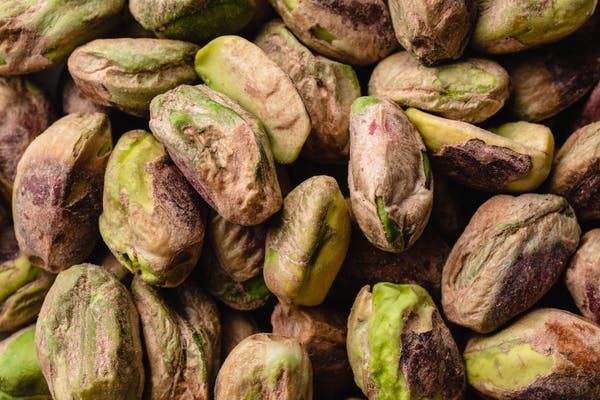
Fertilizing pistachios:
Spring is the best time to fertilize the pistachio tree. Fertilizing the pistachio tree in the spring helps your tree bloom and grow faster. We pour half a cup of fertilizer for every 2 cm diameter of the trees.
Every year, we fertilize twice and put the fertilizer 30 cm away from the tree and under the soil, and after fertilizing, we water it so that it is easy for the tree to use it. The fertilizer we use contains nitrogen-phosphorus-iron-potassium and magnesium.
We also try to use natural animal fertilizers to grow healthier products.
Pistachio tree pruning:
Tree pruning is an important stage because of the following goals, we try to prune pistachio trees regularly. Among the goals of pruning pistachio trees in a suitable and desired shape, creating a strong and strong skeleton, increasing the growth of preserved branches and stimulating the growth of branches Suitable for creating a dense and balanced crown.
We choose winter season for pruning because winter is the best time for pruning. The pistachio tree does not need heavy pruning. Heavy pruning and cutting some branches will reduce the growth of the tree. One of the pruning methods that Pharmid experts choose is cup pruning.
Cup shape pruning
Cup shape pruning idone so that the pistachio trees have a proper shape, and the steps of its implementation are that in the first year in the garden, after you planted the seedling, grafting done on this seedling. .
The transplanted branches removed from the height of 90-100 cm in the first season of winter dormancy.
The operation of removing the primary branches done in the second season of their sleep from a height of 25-30 cm. Preventing the excessive growth of side branches as well as the operation of removing branches done in the third season of growth.
The cutting of secondary branches in the sleeping season of the third year is the same as the second year. Additional branches and desired branches removed in the fourth growing season. Horns that are long, narrow and grow vertically and cause competition removed in the sleeping season of the fourth year.
weed :
We remove all the weeds and keep the tree planting site free of weeds.
Harvesting pistachios:
Pistachio trees are two-year trees, which means that one year they produce a lot and one year they produce less.
When the pistachios are ripe, the color of the shells changes from green and yellow to red and the shell cracks and opens. So when we see these signs, we harvest our product.
Pests may attack pistachios if harvesting delayed.
Harvesting pistachios done in such a way that you shake the trees so that the pistachios fall from the branches to the ground, and to collect them, you must use a trap.
Pistachio has a short base tree with high yield.
It can be grown in dry and low water climate.
The nutritional value of pistachios is very high, it is rich in nutrients,
it has many essential minerals and vitamins that are good for the health of the body.
In Farmid collection, we use fast-yielding and improved seedlings.
We have succeeded in producing organic and high quality pistachio products with the least use of time and water resources.

